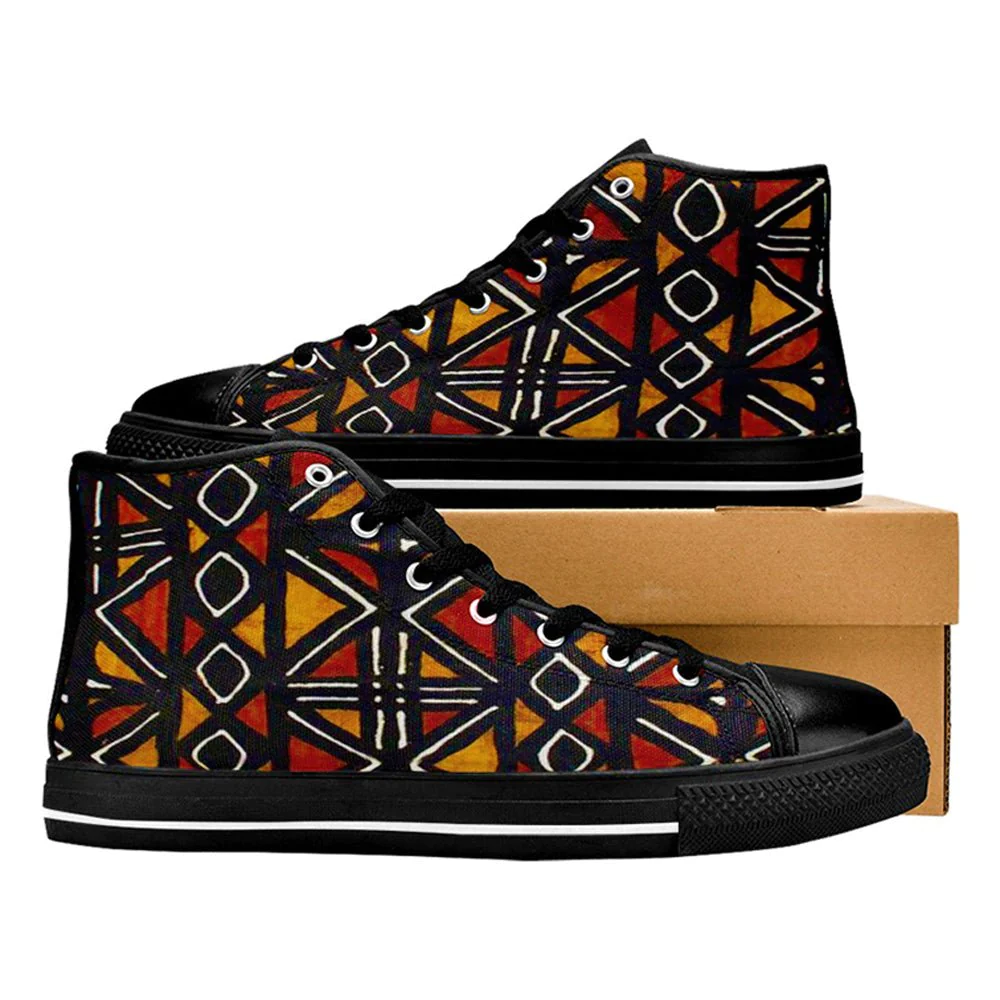From Mali 🇲🇱 with Love: The Artistry of Mudcloth Fabric
- la Djalobienne Eton

- Oct 10, 2023
- 3 min read
Updated: Jan 1, 2024
In the rich tapestry of African textiles, Mudcloth, also known as "Bogolanfini" or
"Bogolan" is a profound symbol of cultural heritage, artistic prowess, and a deep connection to the African soil. Originating primarily from Mali and other West African nations such as Burkina Faso, Senegal, and Ivory Coast, this exceptional fabric has captivated the fascination of people worldwide. Mudcloth isn't just a textile; it's a means of storytelling culture and a testament to the enduring artistry of the African people.
A Long and Symbolic History
Mudcloth's origins date back centuries and are steeped in ancient African traditions. It is believed to have been used as early as the 12th century among the Malian Bambara people. Its name, "Bogolanfini," derives from the Bambara language, where "bogo" signifies earth or mud, "lan" means with and "fini"
denotes cloth. This name eloquently reflects the traditional method of crafting this fabric through a distinctive dyeing process using fermented mud.
Mudcloth is an aesthetic wonder and a medium for storytelling, representing African culture and history. Each Mudcloth design is laden with unique symbolism and significance. The symbols adorning Mudcloth often depict proverbs, historical events, references to nature, and traditional Malian folklore. It is a visual language communicating the culture and heritage of those who craft and employ it.
The Art of Creating Mudcloth
The making of Mudcloth is an arduous and highly artistic process.
It commences with plain, handwoven cotton fabric, which serves as the canvas for intricate patterns and symbols. The pivotal steps in crafting Mudcloth encompass the following:
Cotton Weaving: The process commences with creating a base fabric through handweaving. This fabric is typically undyed and varies in length and width, contingent on its intended use.
2. Mud Application: The intricate patterns and symbols are imprinted onto the Mudcloth using a mud mixture comprising fermented mud, plant extracts, and natural pigments. These designs are meticulously hand-painted or block-printed onto the fabric.
3. Drying in the Sun: The fabric is left to dry under the scorching sun after applying the mud designs. The sun's heat is vital in setting the designs and allowing the fabric to acquire distinctive earthy hues.
4. Repetition of the Process: The application of mud, drying, and washing is frequently repeated several times to attain the desired depth of color and intricacy of the designs.
The final product is a masterpiece featuring captivating, contrasting designs, typically in shades of brown or black, set against the fabric's natural color.
Mudcloth in the Modern Era
In recent years, Mudcloth has transcended its traditional origins to become a global symbol of African culture and artistry. Its enthralling patterns and earthy colors have rendered it popular among fashion designers, interior decorators, and art collectors worldwide. Fashion designers have wholeheartedly embraced Mudcloth, integrating it into their collections to create striking garments, accessories, and footwear that harmonize traditional craftsmanship with contemporary style.
In interior design, Mudcloth fabric has discovered a niche in homes and commercial spaces. Its organic feel and captivating patterns have made it a favored choice for upholstery, curtains, throw pillows, and wall hangings.
Furthermore, the global appreciation of Mudcloth has contributed to preserving traditional craftsmanship and sustaining local artisans in Mali.
A Timeless Testament to Tradition
Mudcloth fabric is an enduring testament to the power of tradition and the timeless allure of cultural expression. Its intricate designs, earthy colors, and profound cultural significance have elevated it to a revered and beloved facet of African heritage. As Mudcloth continues to inspire fashion, interior design, and art across the globe, it remains a symbol of cultural preservation and a profound connection to the African soil that transcends time and borders.
The artistry of Mudcloth fabric, known as "Bogolanfini," is a rich and timeless tradition deeply rooted in the soil of Mali. It transcends being merely a textile; it represents a profound connection to African culture and history. Mudcloth's intricate designs, created through a labor-intensive process involving fermented mud and natural pigments, are laden with symbolism, depicting proverbs, historical events, and cultural references. This ancient art form has found a global audience, inspiring fashion, interior design, and art while preserving traditional craftsmanship and supporting local artisans. Mudcloth is a testament to the enduring power of tradition and the timeless beauty of cultural expression, bridging the past and present and speaking to the hearts of those who admire it.
Mudcloth is a canvas of culture, where tradition threads weave our souls' stories.- La Djalobienne Eton








































Comments